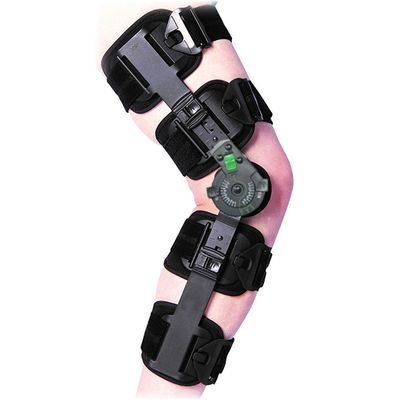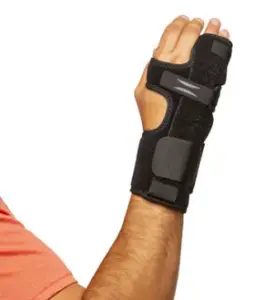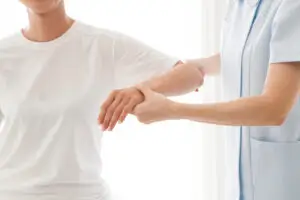Wear Orthopedic Braces
Wearing a brace all day depends on the type of brace, the injury, and the advice from your healthcare provider. Here are some general guidelines:
Medical or Post-Injury Braces: If your doctor has prescribed a brace for a specific injury (e.g., after surgery or for joint stabilization), you may be advised to wear it all day, at least in the initial stages of recovery. In this case, wearing the brace as directed is important to protect the injury and promote healing. Some braces, like post-surgery or spinal braces, are meant to provide full-time support and stabilization.
Prolonged Wear: Wearing a brace for extended periods without a medical recommendation can lead to issues such as muscle weakening or joint stiffness, as braces may limit movement or reduce muscle activity. If a brace is worn too long without breaks, the muscles around the area may become dependent on the support, leading to reduced strength or flexibility.
Comfort and Fit: Braces should fit snugly but not too tight. If you experience discomfort, irritation, or skin issues from wearing a brace all day, you should consult with your healthcare provider to make adjustments or modify the duration of use.
Removable Braces: Many braces are designed to be worn during certain activities or periods (e.g., during the day but removed at night). It’s important to follow the specific instructions for your type of brace.
Always consult with a doctor or physical therapist to understand the proper wear schedule for your brace based on your condition and needs.
Trend ROM Hinged Knee
The Trend ROM Hinged Knee is an adjustable range of motion orthosis that stabilizes the knee for patients suffering from mild to moderate strains, sprains, or ligament tears. Our Trend TX2 Moisture Wicking Neoprene provides support and compression while also being lightweight and breathable. Sized and universal options are available for a customized contoured fit.
-
PDAC Approved Codes
- L1832
- L1833
-
Key Features
- Provides post-injury protection, compression, and support
- Front closure wraparound
- Trend TX2 Moisture Wicking Neoprene provides a custom contoured fit
- Rubber tabs allow easy re-adjustment and application
- Easy to use controlled range of motion hinge
-
Indications
- Mild to moderate ACL, PCL, MCL, and LCL Sprains
- Meniscal or patellar instabilities
- Mild osteoarthritis
- Mild knee sprains and strains
-
Sizing Guide
- DC-032 (Up to 28”) UNIVERSAL
- DCT-002-1 (Up- 15”) XS
- DCT-002-2 (15- 18”) S
- DCT-002-3 (18- 21”) M
- DCT-002-4 (21- 24”) L
- DCT-002-5 (24- 26”) XL
- DCT-002-6 (26- 28”) 2XL
- DCT-002-7 (28- 30”) 3XL
Key Features of a Hinged Knee Orthosis:
- Adjustable Range of Motion (ROM):
- Allows controlled flexion and extension of the knee to aid in gradual recovery.
- Often has dial locks or stops to set specific degrees of motion restriction.
- Stabilization and Support:
- Reinforces the knee joint, preventing excessive lateral movement.
- Reduces strain on injured ligaments or post-operative structures.
- Hinged Mechanism:
- Mimics natural knee movement while preventing hyperextension.
- Can be single-axis or polycentric hinges for improved biomechanics.
- Comfortable and Adjustable Fit:
- Features adjustable straps, cushioned liners, and breathable materials.
- Designed for long-term wear without discomfort.
Common Uses of Hinged Knee Orthoses:
- Post-surgical recovery (e.g., ACL reconstruction, meniscus repair).
- Ligament injuries (ACL, MCL, PCL, LCL sprains or tears).
- Osteoarthritis relief (offloading knee pressure).
- Sports injury prevention (especially in high-impact sports).
- Patellar stabilization (for conditions like patellar subluxation).


Knuckle Orthosis: Purpose, Benefits, and Applications
Knuckle Orthosis Knuckle Orthosis: Purpose, Benefits, and Applications A Knuckle Orthosis is a specialized medical device designed to provide stability, support, and protection to the metacarpophalangeal (MCP) joints—the knuckles of the hand. These orthotic devices are commonly used in the… Continue Reading…

Wrist and Hand Braces: Support, Relief, and Rehabilitation for Hand and Wrist Conditions
Wrist and Hand Braces Introduction Wrist and hand braces are essential tools for individuals managing pain, recovering from injuries, or dealing with chronic conditions such as carpal tunnel syndrome, arthritis, or tendonitis. These braces provide stability, compression, and support to… Continue Reading…

Orthopedic Shoulder Braces: Support for Shoulder Injuries and Chronic Conditions
Orthopedic Shoulder Braces Introduction Orthopedic shoulder braces are designed to provide support and stabilization for individuals recovering from shoulder injuries, managing chronic shoulder pain, or undergoing post-surgical rehabilitation. These braces help alleviate discomfort, protect the shoulder joint, and prevent further… Continue Reading…


